Harold Lamb’s Swords From the West and Swords From the Desert
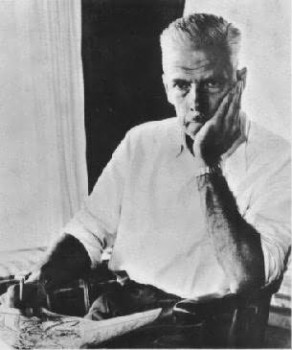 Swords From the West
Swords From the West
Harold Lamb
Howard Andrew Jones, ed.
Bison Books (602 pp, $26.95, 2009)
Swords From the Desert
Harold Lamb
Howard Andrew Jones, ed.
Bison Books (306 pp, $21.95, 2009)
Reviewed by Bill Ward
Harold Lamb (1892-1962) is an author in danger of being forgotten. This should not be the case, for a number of reasons. Firstly, Lamb is good — from his historical biographies that read like action-adventure novels, to his actual action-adventure stories that cemented his status as a king of the pulps, Lamb is a terrific writer. He is also a diverse writer, having achieved success in both fiction and non-fiction, magazines and books, and even as a Hollywood screenwriter.
And, not to be overlooked, he is a historically significant writer in the evolution of fiction — serving as a bridge from the pulp era to the post-war era, and as a grandfather figure to the kind of adventure fantasy pioneered by Robert E. Howard and then expanded upon by the greats of the field such as Fritz Leiber, C.L. Moore, Michael Moorcock, Karl Edward Wagner, Leigh Brackett, Steven Brust, and Charles Saunders. The idiom in which today’s current crop of rising Sword & Sorcery stars work within can be traced right back to the nineteen teens and twenties, and the historical adventures of Harold Lamb that did so much to inform the approach of the future creator of Conan.
While aging copies of Lamb’s best-selling biographies can still be found on many library shelves to this day (it was one such copy of Lamb’s Alexander of Macedon that introduced me to his work — and to a love of history itself — at a young age), his adventure fiction has only sparsely been made available in reprints from specialty presses. Few people knew the full breadth of Lamb’s work, and only private collectors — those who possessed the actual copies of magazines such as Adventure, Collier’s, or Cassell’s — were able to enjoy the bulk of his short fiction. But a few years ago Lamb scholar (and Black Gate editor) Howard Andrew Jones set out to correct this deficiency and rescue these stories from obscurity, in somewhat the same way an earlier generation of fans worked to save the legacy of Robert E. Howard. The job of hunting, collating, and proofing Lamb’s large body of work has resulted in a handsome series of collections from Bison Books, the first four of which were released in 2006 and 2007 and contain Lamb’s famous Cossack adventures.
________________
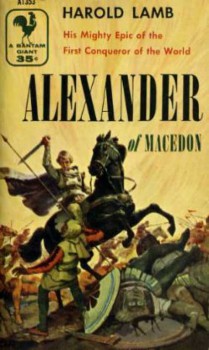 Most recently, two further collections of Lamb’s adventure fiction have appeared, the companion volumes Swords From the West and Swords From the Desert. Together they contain fiction spanning the High Middle Ages to the Renaissance (with brief forays into later periods), Western Europe to the Far East. The variety within these books is impressive, from short stories and novellas up to short novels, tales of the Crusades and the Mongol Invasion, and heroes in the shape of Christian knights and Arab doctors — and seemingly everything in between. Characteristic of all Lamb’s fiction, regardless of where you find it, is a driving, headlong pace and concise writing — concise somehow in spite of the fact that Lamb manages to breathe so much life and richness of detail into his setting that many of these stories are an education in the history and culture of a time and place. This combination of fast moving plots and skillful evocation of setting would later become a hallmark of Sword & Sorcery fiction.
Most recently, two further collections of Lamb’s adventure fiction have appeared, the companion volumes Swords From the West and Swords From the Desert. Together they contain fiction spanning the High Middle Ages to the Renaissance (with brief forays into later periods), Western Europe to the Far East. The variety within these books is impressive, from short stories and novellas up to short novels, tales of the Crusades and the Mongol Invasion, and heroes in the shape of Christian knights and Arab doctors — and seemingly everything in between. Characteristic of all Lamb’s fiction, regardless of where you find it, is a driving, headlong pace and concise writing — concise somehow in spite of the fact that Lamb manages to breathe so much life and richness of detail into his setting that many of these stories are an education in the history and culture of a time and place. This combination of fast moving plots and skillful evocation of setting would later become a hallmark of Sword & Sorcery fiction.
But Lamb did not write fantasy, he wrote history — and he wrote it with such attention to detail and empathy that it comes alive on the page. The same passion and intuitive understanding of his subject that made his non-fiction best-sellers such as the two-part The Crusades (a direct inspiration for the Cecil B. DeMille film, on which Lamb served as a screenwriter) and his biographies of famous figures such as Genghis Khan, Hannibal, Alexander, and Tamerlane so excellently readable, comes through in every story. Whether he is dealing with actual historical events such as the death of Richard the Lionheart or the fall of Constantinople to a Crusader army, or merely skirting the edges of history with a plot entirely of his own devising, Lamb’s knowledge and enthusiasm come to the fore. To read Lamb in any form is to receive and education — and to have fun in the process.
To begin our education with Swords From the West, a massive 600 page volume collecting adventure stories with European protagonists, is to travel to the lands of Outremer in the wake of the First Crusade and Venice at the height of its power, to shelter in Bokhara on the eve of the arrival of the Mongol horde and ride the vast stretches of Central Asia in the time of Kublai Khan, and to visit the oft-contested cities of Constantinople, Antioch, and Jerusalem, and explore the far off lands of Persia, Transoxiana, and India. Swords From the West spans Western Europe to the Far East, but it is the Near East and Central Asia that are Lamb’s particular areas of interest, and the conflict and fusion of the Christian, Muslim, and Steppe cultures that occurred following the Crusades informs most of the stories in this volume.
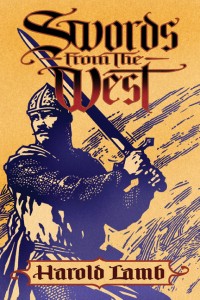 Take for example the two stories of Nial O’Gordon, a grim Scottish adventurer born in the Crusader Kingdoms and traveling through Central Asia toward the court of the Great Khan. O’Gordon shows the staunchness of his Crusader upbringing, but is himself multi-lingual and keen to the ways of the cosmopolitan Muslim civilization which he was reared. In “The Golden Horde,” O’Gordon is maneuvered into committing an act of thievery against the local Mongol ruler, but in the end redeems himself through honor. By his next (and, unfortunately, last) adventure, “The Keeper of the Gate,” O’Gordon is, to the casual eye, indistinguishable from the Mongol masters he served for a time, so assimilated has he become. In this tale O’Gordon again puts himself at odds with forces greater than himself in pursuit of duty — this time a duty to the Great Khan whom he has never met — and he seems as much a chivalrous Christian Knight as he does an Easterner in outlook. He is just one of many characters that serve as hybrids between the worlds of Frank and Arab, Christian and Muslim, Crusader, Nomad, and City-dweller.
Take for example the two stories of Nial O’Gordon, a grim Scottish adventurer born in the Crusader Kingdoms and traveling through Central Asia toward the court of the Great Khan. O’Gordon shows the staunchness of his Crusader upbringing, but is himself multi-lingual and keen to the ways of the cosmopolitan Muslim civilization which he was reared. In “The Golden Horde,” O’Gordon is maneuvered into committing an act of thievery against the local Mongol ruler, but in the end redeems himself through honor. By his next (and, unfortunately, last) adventure, “The Keeper of the Gate,” O’Gordon is, to the casual eye, indistinguishable from the Mongol masters he served for a time, so assimilated has he become. In this tale O’Gordon again puts himself at odds with forces greater than himself in pursuit of duty — this time a duty to the Great Khan whom he has never met — and he seems as much a chivalrous Christian Knight as he does an Easterner in outlook. He is just one of many characters that serve as hybrids between the worlds of Frank and Arab, Christian and Muslim, Crusader, Nomad, and City-dweller.
While the Arab protagonists of the companion volume to Swords of the West, Swords of the Desert, can be taken as clear proof that Lamb himself was above the easy racial denigration of a literary era and style in which merely making a character non-white was common shorthand for villainy or weakness, it is in West that we find perhaps the best examples of a fair-handed view of culture and religion. “The Long Sword” seems the perfect exemplar of this, containing as it does both a Crusader and a Muslim hero, and villains in the form of Venetian and of Bedouin. Concerning the rescue of the beautiful daughter of a Crusader knight from the Venetians that would sell her into slavery, “The Long Sword” gives us a snapshot of the patchwork cultural quilt of the lands of Outremer (literally “over the sea,” the lands in the Levant held by the Crusader Kingdoms after the First Crusade). The central figure, an Outremer-born knight who presides over a poor holding, is as much as native to the lands as the Muslim neighbors with whom he strives for peace. His closest and most loyal friend is a Kurd, and together they risk their lives for a principle that can be understood on both sides of the religious divide.
Valor, duty, honor, loyalty — these are at the heart of much of Lamb’s fiction; and his characters — though often outsiders — are clearly heroes in the classic sense. In the short novel “The Making of the Morning Star” — surely one of Lamb’s best pieces — we are introduced to the protagonist Sir Robert of Antioch as he arrives back at the castle of his lord after having been released by Egyptians. Such is the esteem in which his enemy holds him, Robert is trusted to return himself to bondage within the year if he cannot raise his own ransom. Robert’s lord will not help, and in fact he betrays him, and Robert seeks his ransom far to the East. In Persia he swears to defend the city of Bokhara against a massive Mongol invasion using his expertise in seigecraft. During the nail-biting action of the siege itself, Robert must also handle the machinations of back-stabbing underlings, and concerns over the hidden treasure of the Persian Shah. In the climax that gives the story its title, Robert’s loyalty and honor are tested when he is pitted against a friend for the amusement of Genghis Khan himself.
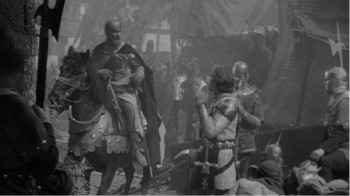
Another great Eastern conqueror figures prominently in “The Grand Cham,” a short novel every bit the equal of “The Making of the Morning Star.” It concerns one Michael Bearn, sea-captain and escaped slave of the Turkish Sultan Bayezid. Bearn exhibits that other primary Lamb trait — cleverness. From his masterful escape from the Turkish camp to his memorable confrontation with Tamerlane the Great over a chessboard at the height of the novel, Bearn is a resourceful and brainy hero who would not be out of place in a Jack Vance story. “The Grand Cham” itself is a wonderful journey around the Mediterranean world and lands East that takes the crushing defeat of Bayezid at Ankara by Tamerlane as its fulcrum. It is a story with humor, exoticism, and top-notch action, something that will appeal to those knowledgeable about the history of the time, as well as readers simply looking for a good piece of action-adventure storytelling.
And that, when it comes down to it, is exactly what Lamb does — delivers good action adventure. Nearly every story in both volumes fall into this category and even those that don’t strictly fit this definition still demonstrate Lamb’s characteristic brisk writing and solid plot construction.
If the protagonists of Swords From the West are of European extraction, than those of the much shorter companion volume, Swords From the Desert, can be described as Easterners or, more specifically, Arabs. Swords From the Desert also differs from West in that it is more focused across a smaller number of pages, containing as it does numerous novella length stories, three of which offer a repeat protagonist.
These three novellas of Daril ibn Athir comprise the heart of this collection. Ibn Athir is an aging warrior-turned-physician, a man wise and compassionate and strongly contrasting with the many headstrong Crusaders of the previous volume. He is on a journey to the court of the Mogul of Ind, with the intentions of the serving that great lord. Despite his age and new status as a healer, ibn Athir is no stranger to swordplay, as the bloody events of these three novellas contest. My favorite would be the middle story, “The Road to Kandahar,” in which ibn Athir’s caravan is attacked by Afgan raiders in the service of a rebellious prophet, known simply as ‘The Veiled One.’ Teaming up with one Mahabat Khan, the Viceroy of the Mogul of Ind, the two must use their wits as much as the edges of their swords to defeat the unruly tribes and their sinister leader and bring stability to the region once more.
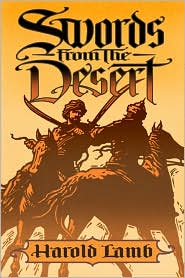 But in the next story “The Light of the Palace” ibn Athir is, well, a different ibn Athir than the one we meet in the preceding two tales. And, in fact, it seems both these ibn Athirs are different from the warrior-turned-physician residing in Medieval Paris that we encounter in the opening story of the volume, “The Rogue’s Girl.” It hardly matters, but it does demonstrate one of the characteristics of these collections, the occasional repetition and a lack of continuity between some stories. Lamb was writing at a time when he could scarce imagine having these stories all collected together and looked at alongside one another, and thus each story tends to take place in its own universe, one where certain names or even events may occur repeatedly. The best example would have to be in the Swords of the West, where the climax from “The Making of the Morning Star” is repeated more-or-less exactly in “The Iron Man Rides.”
But in the next story “The Light of the Palace” ibn Athir is, well, a different ibn Athir than the one we meet in the preceding two tales. And, in fact, it seems both these ibn Athirs are different from the warrior-turned-physician residing in Medieval Paris that we encounter in the opening story of the volume, “The Rogue’s Girl.” It hardly matters, but it does demonstrate one of the characteristics of these collections, the occasional repetition and a lack of continuity between some stories. Lamb was writing at a time when he could scarce imagine having these stories all collected together and looked at alongside one another, and thus each story tends to take place in its own universe, one where certain names or even events may occur repeatedly. The best example would have to be in the Swords of the West, where the climax from “The Making of the Morning Star” is repeated more-or-less exactly in “The Iron Man Rides.”
Still, given the nature of the markets Lamb was writing for, it is remarkable that these stories aren’t even more repetitious. In fact, they could hardly be called formulaic at all — yes, there are familiar elements like the woman that is there to be rescued, the use of disguises during battles, the mysterious stranger who turns out to be an important person, or the fulfillment of an oath or other duty creating conflict or spurring a hero on to making difficult decisions. But even when read all together — as I did for this review — these stories still seem remarkably fresh. Perhaps it is the writing itself, direct, vigorous, and clear, that ensures that each story is as eagerly greeted as the last. Or perhaps it is the depth of the narrative, for not only are the worlds that Lamb conjures — often by just a few deft lines of description, an apt piece of dialogue, or an exotic word or phrase — lent an authenticity often lacking in works hundreds of times larger, but the characters themselves seem real. Nevermind that many of them are in actuality archetypes — the fact that they think like individuals of the 12th century, or speak like Arabs brought up reciting the Koran, or do the things that Mongols, Turks, Greeks, Venetians, Franks, or Persians might conceivably do, makes them stand out above the simple sketches you may find in comparable works of adventure. Lamb cared enough about the people of these times and places to learn how they thought, and to portray them as people, and not just stock characters in a pulpster’s trunk of tricks.
While Lamb may have repeated himself in some of these stories, playing with favorite ideas, themes, or even words, he was too good of a writer to ever tell the same story twice. Which makes every page of Swords of the West and Swords of the Desert worth reading and rereading. These tales — written nearly a century ago — show a remarkable ageless quality exhibited by the best fiction. Read Lamb, and you are not put in mind of the 1920s, but of the 1220s. While much pulp is read specifically for its quality of ‘pulpishness,’ as a way to celebrate that lost time and style, Lamb is an author for all time. His work can stand beside the very best adventure fiction of the fantasy genre, and the most carefully crafted tales of historical fiction. His brisk, precise prose and progressive outlook toward race and culture elevate him above his peers — even as his mastery of pace and plot mark him as a giant of his era. That Lamb’s fiction has been allowed to languish for so long is a crime — that it is now being collected and presented to a world always hungry for these kinds of stories is cause for readers to celebrate.
A slightly different version of this review originally appeared in Black Gate #14.
__________
BILL WARD is a genre writer, editor, and blogger wanted across the Outer Colonies for crimes against the written word. His fiction has appeared in numerous magazines and anthologies, as well as gaming supplements and websites. He is a Contributing Editor and reviewer for Black Gate Magazine, and 423rd in line for the throne of Lost Lemuria. Read more at BILL’s blog, DEEP DOWN GENRE HOUND.
[…] In our second installment we talk about Howard’s reverence for the greatly under-appreciated historical adventure writer Harold Lamb, and the massive project Howard undertook to collect and republish Lamb’s fiction to preserve […]
[…] was a chance to follow in the footsteps of my heroes Ronald Welch and Harold Lamb. It was difficult to say yes without sounding unprofessional (by swearing and whooping, […]
[…] In our second installment we talk about Howard’s reverence for the greatly under-appreciated historical adventure writer Harold Lamb, and the massive project Howard undertook to collect and republish Lamb’s fiction to preserve […]
I refuse to even try and read this. Who are you, and what you? You must be a total brain dead fuck up. You print this information in this tiny, blue tinted type. And then you put it on a black background!
What is the point of all your work? Your hours of research, and writing? And then you waste the entire procedure by printing it like this.